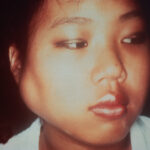 EULAR 2023—Dazodalibep is a non-antibody biologic antagonist of the CD40 ligand for managing the signs and symptoms of Sjögren’s disease. In a phase 2 clinical trial, this investigational agent was evaluated in patients with Sjögren’s disease and a high level of symptom burden.1 During EULAR 2023, Milan, Italy, May 31–June 3, data from the study were presented by Chiara Baldini, University of Pisa, Department of Clinical and Experimental Medicine, Italy.
EULAR 2023—Dazodalibep is a non-antibody biologic antagonist of the CD40 ligand for managing the signs and symptoms of Sjögren’s disease. In a phase 2 clinical trial, this investigational agent was evaluated in patients with Sjögren’s disease and a high level of symptom burden.1 During EULAR 2023, Milan, Italy, May 31–June 3, data from the study were presented by Chiara Baldini, University of Pisa, Department of Clinical and Experimental Medicine, Italy.
Background: Sjögren’s disease is a chronic, systemic, autoimmune disease that can occur alone or with other autoimmune conditions, such as rheumatoid arthritis (RA) or lupus. The disease can manifest with symptoms of dryness, pain and fatigue, which can be assessed using the validated EULAR Sjögren’s Syndrome Patient Reported Index (ESSPRI). These cardinal symptoms are assessed by domain on 0–10 numerical scales, with the final score being the mean of the scores of each domain.1-3
Patients with Sjögren’s disease who have a high level of symptom burden independent of systemic involvement have been under-represented in clinical trials, notwithstanding overall unacceptable health status and significant disease burden. Therefore, in this study (NCT04129164), St.Clair et al. evaluated the efficacy and safety of dazodalibep in adult patients with Sjögren’s disease who have an unacceptable symptom burden and limited systemic organ involvement.4 This trial also evaluated the efficacy and safety of dazodalibep in patients with Sjögren’s disease and moderate-to high levels of systemic disease activity as defined by an ESSDAI score of ≥5. Those results were reported separately at this meeting.
Methods
This double-blind, crossover study compared intravenous (IV) dazodalibep with placebo in adult patients with Sjögren’s disease, an ESSPRI score of ≥5 (i.e., moderately active disease) and a EULAR Sjögren’s Syndrome Disease Activity Index (ESSDAI) score of <5 (i.e., mild to moderate disease activity).
In the study, 109 eligible subjects were randomized in a 1:1 ratio to receive 1,500 mg of IV dazodalibep (n=54) or placebo (n=55) every two weeks for three doses, then every four weeks for an additional four doses. On day 169, the participants who initially received dazodalibep were switched to placebo every four weeks for five doses. Meanwhile, patients who initially received placebo were switched to IV dazodalibep every four weeks for five doses. Participants were then followed for 12 weeks.
The primary end point was the change from baseline in ESSPRI scores at day 169. Safety was also evaluated.
Results
The mean age of the study subjects was 49.9 ± 12.1 years (standard deviation), and most were women (94.5%).
For the participants who received dazodalibep, the change from baseline to day 169 in ESSPRI score (least-squares [LS] mean ± SE) was −1.80 ± 0.23, compared with −0.53 ± 0.23 for participants who received placebo, a difference of −1.27 ± 0.33 (P=0.0002). The change from baseline to day 169 in each of the three ESSPRI domains was significantly greater for the participants who received dazodalibep than those who received placebo: dryness, P=0.0066; fatigue, P=0.0022; and pain, P=0.0010. At day 169, a significantly larger proportion of participants treated with dazodalibep achieved at least a one point or a 15% reduction in ESSPRI compared with participants who received placebo (66.7% vs. 32.7%; P=0.008).
From baseline to day 169, the participants who received dazodalibep had significantly greater improvement in the Functional Assessment of Chronic Illness Therapy-Fatigue score (LS mean ± SE: 8.1 ± 1.4) than those who received placebo (2.8 ± 1.4; P=0.0095). At day 169, participants who received dazodalibep had greater numerical improvement in the Ocular Surface Disease Index (−14.0 ± 3.0 vs. −8.5 ± 2.9; P= 0.1936) and Patient’s Global Impression of Severity (−0.6 ± 0.1 vs. −0.4 ± 0.1; P=0.1781) than participants who received placebo. (Note: The Ocular Surface Index assesses dry eye symptoms and its effect on a patient’s vision within the prior week.5)
Seventy-five participants reported adverse events. Half the participants had received dazodalibep (37/54) and approximately half had received placebo (38/55). Most reactions were mild to moderate in severity. The most frequently reported adverse events in those who received dazodalibep were COVID-19, nasopharyngitis, anemia and diarrhea. There were three serious adverse events: pneumonia (influenza), post-acute COVID-19 syndrome (i.e., long COVID) and gammopathy. One participant who received placebo had neutropenia.
Investigators deemed all serious adverse events unrelated to the study medication. One participant who received dazodalibep and two participants who received placebo discontinued the study due to an adverse event, which was not defined in the abstract.
Conclusion
The primary end point was met in this phase 2 trial of dazodalibep therapy for patients with Sjögren’s disease with an unacceptable symptom burden and limited systemic organ involvement. Participants who received 1,500 mg of IV dazodalibep every two weeks for three doses and then every four weeks for an additional four doses had statistically significant and clinically meaningful improvement for key symptoms of Sjögren’s disease as measured by ESSPRI and Patient’s Global Impression of Severity when compared with placebo-treated participants.
Overall, the study found dazodalibep was generally safe and well tolerated, with limited serious adverse events. Larger clinical trials are warranted to further determine effectiveness and safety.
“As reported in another abstract from EULAR 2023, a 20-week course of dazodalibep infusions also reduced the signs and symptoms of extraglandular involvement in those patients with Sjogren’s [disease] with at least moderately active systemic disease, as defined by an ESSDAI of ≥5,” says E. William St.Clair, MD, the lead investigator in this study and chief of the Division of Rheumatology and Immunology, Duke University School of Medicine, Durham, N.C.6 “Taken together, these results provide evidence that dazodalibep therapy for Sjögren’s [disease] has an acceptable balance of efficacy and safety for controlling systemic disease activity, as well as reducing symptoms of dryness, fatigue and pain.”
Michele B. Kaufman, PharmD, BCGP, is a freelance medical writer based in New York City and a pharmacist at New York Presbyterian Lower Manhattan Hospital.
References
- St. Clair EW, Alecios I, Rees W, et al. Dazodalibep (VIB4920/HZN4920) in Sjögren’s subjects with an unacceptable symptom burden: Safety and efficacy from a phase 2, randomized, double-blind study [abstract LB0003]. Ann Rheum Dis. 2023;82:201.
- Sandoval-Flores MG, Chan-Campos I, Hernández-Molina G. Factors influencing the EULAR Sjögren’s Syndrome Patient-Reported Index in primary Sjögren’s syndrome. Clin Exp Rheumatol. 2021 Nov–Dec;39 Suppl 133(6):153–158.
- Disease & conditions: Sjögren’s syndrome. American College of Rheumatology. 2023 Feb. (Updated by Kristen Lee, MD, and reviewed by the Sjögren’s Foundation and the American College of Rheumatology Committee on Communications and Marketing.)
- A study to evaluate the efficacy and safety of vib4920 in participants with Sjögren’s syndrome (SS) [NCT04129164]. ClinicalTrials.gov. 2023 May 21.
- EyeWiki: Dry eye syndromes questionnaire. American Academy of Ophthalmology. 2023 Mar 12.
- St. Clair EW, Wang L, Alevizos I, et al. Efficacy and safety of dazodalibep (VIB4920/HZN4920) in subjects with Sjögren’s sydrome: A phase 2, randomized, double-blind, placebo-controlled, proof of concept study [abstract OP0143]. Ann Rheum Dis. 2023;82:201.


